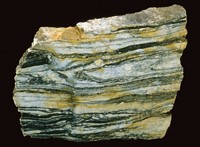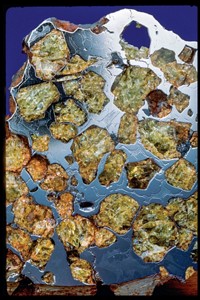Advertisement
Grab your lab coat. Let's get started
Welcome!
Welcome!
Create an account below to get 6 C&EN articles per month, receive newsletters and more - all free.
It seems this is your first time logging in online. Please enter the following information to continue.
As an ACS member you automatically get access to this site. All we need is few more details to create your reading experience.
Not you? Sign in with a different account.
Not you? Sign in with a different account.
ERROR 1
ERROR 1
ERROR 2
ERROR 2
ERROR 2
ERROR 2
ERROR 2
Password and Confirm password must match.
If you have an ACS member number, please enter it here so we can link this account to your membership. (optional)
ERROR 2
ACS values your privacy. By submitting your information, you are gaining access to C&EN and subscribing to our weekly newsletter. We use the information you provide to make your reading experience better, and we will never sell your data to third party members.
Geochemistry
Chemistry In Pictures
Chemistry in Pictures: The oldest thing on Earth
by Brianna Barbu
November 22, 2023

The people at the Smithsonian Institution National Museum of Natural History were nice enough to give a couple members of the Chemistry in Pictures team a behind-the-scenes look at their mineral collection. For the next couple weeks, we’ll bring you photos of some of the minerals that wowed us, some of which are billions of years old.

The oldest minerals on Earth actually came from space. This is a piece of the Allende meteorite, and those light-colored bits (called calcium-aluminum-rich inclusions, or CAIs) date back to the formation of our solar system, 4.65 billion years ago. If you chopped the meteorite up in a blender and analyzed it, you would find it has the same elemental composition as the Sun and Earth and everything else that formed from the nebular components that our solar system came from, says Elizabeth Cottrell, chair of the department of mineral sciences at the National Museum of Natural History. “It contains all of the elements that make up everything we are.”
The Allende meteorite, which arrived on our planet on February 8, 1969 near the village of Pueblito de Allende in Mexico, was about the size of a car before it hit our atmosphere and exploded into thousands of smaller pieces. It’s one of the most studied meteorites in the world and an integral source of information about the chemistry of our solar system, including clues about the origin of Earth’s water.

Credit: Chip Clark/Smithsonian Institution National Museum of Natural History (table specimen, close-up); Brianna Barbu/C&EN (person holding rock)
Do science. Take pictures. Win money. Enter our photo contest here.





Join the conversation
Contact the reporter
Submit a Letter to the Editor for publication
Engage with us on Twitter